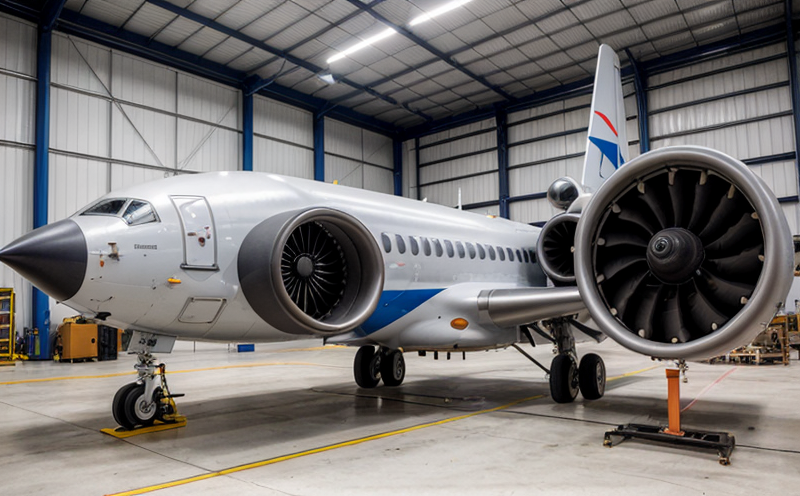Naval Vessel Hull Vibration Analysis
The integrity and operational effectiveness of naval vessels depend significantly on their hull's ability to withstand harsh marine environments. Naval vessel hull vibration analysis plays a crucial role in ensuring the structural health, performance, and longevity of these vessels. This service involves detailed assessment and measurement of vibrations within the hull structure under various operational conditions. The objective is not only to identify potential sources of stress and strain but also to optimize design parameters for future vessel construction.
Naval vessels operate in a challenging environment with constant exposure to dynamic loads from waves, currents, and propulsion systems. These factors contribute to complex vibrational patterns that can affect the overall stability and safety of the ship. By conducting comprehensive hull vibration analysis, we aim to provide actionable insights into the structural health of naval vessels, helping engineers make informed decisions about maintenance schedules, material selection, and modifications.
The process begins with a thorough understanding of the vessel's design specifications and operational requirements. This includes identifying critical areas where vibrations might occur based on historical data or simulations. Once these areas are pinpointed, specialized equipment is used to collect detailed vibration profiles under simulated operating conditions. Advanced signal processing techniques are then applied to analyze this data, allowing us to detect any anomalies that could indicate underlying issues.
Our team of experts ensures compliance with relevant standards such as ISO 19405 and ASTM E2623, which provide guidelines for measuring and interpreting vibrations in structural systems. By adhering strictly to these standards, we ensure the accuracy and reliability of our findings. The results are presented in a clear, concise report that includes recommendations tailored specifically for each vessel. These recommendations cover both short-term fixes as well as long-term strategies aimed at enhancing the overall performance and durability of the vessel.
Understanding the importance of this service requires an appreciation of how even minor deviations from expected behavior can have significant implications. For instance, excessive vibration levels could lead to premature wear on critical components like engines or propellers, increasing maintenance costs and downtime. Conversely, optimal control over these vibrations can enhance fuel efficiency and extend the lifespan of the vessel.
Moreover, naval vessels serve as vital assets for national security and maritime operations. Any compromise in their structural integrity poses a direct threat to mission success and crew safety. Regular hull vibration analysis serves not only preventive maintenance purposes but also contributes significantly towards safeguarding these critical resources.
In summary, Naval Vessel Hull Vibration Analysis is more than just a technical exercise; it's an essential component of maintaining the operational excellence and longevity of naval vessels. Through precise measurement and interpretation techniques guided by industry standards, this service provides valuable information that supports informed decision-making processes across various stages of vessel lifecycle management.
Applied Standards
In conducting Naval Vessel Hull Vibration Analysis, we adhere strictly to internationally recognized standards that govern the measurement and interpretation of structural vibrations. These include:
- ISO 19405:2017 - Vibration, Shock and Acoustic Tests for Ships – This standard specifies the methods for measuring and reporting vibrations in ship structures. It provides detailed procedures for setting up test environments, collecting data using appropriate instrumentation, and analyzing results.
- ASTM E2623 - Practice for Determining Vibration Characteristics of Structures – This practice outlines procedures for determining the dynamic characteristics of structures by measuring their response to excitation forces. It includes recommendations on selecting appropriate sensors, calibration methods, and data acquisition strategies.
- ASTM E2371 - Practice for Determining Vibration Characteristics of Structures by Modal Analysis – This standard provides guidelines for performing modal analysis on structures using vibration testing. It covers aspects such as model identification, parameter estimation, and validation.
- IEC 61400-23:2007 - Wind Turbines – Measurement of Vibration in Mechanical Components – Although primarily intended for wind turbines, some principles apply to naval vessels. This standard focuses on measuring and evaluating vibrations within mechanical components of wind energy systems, which can serve as a reference point when assessing similar issues in naval architecture.
By following these rigorous standards, we ensure that our analysis is consistent with best practices recognized globally by leading organizations in the field.
Benefits
- Enhanced Structural Integrity: Early identification of potential weaknesses allows for timely repairs and reinforcements, preventing costly failures later on.
- Prolonged Operational Lifespan: By addressing vibration-related concerns proactively, the overall durability of naval vessels is significantly extended.
- Improved Performance Metrics: Optimized hull designs result in better fuel efficiency and enhanced maneuverability during operations.
- Safety Assurance: Ensures that vessels meet stringent safety standards set by regulatory bodies, thereby protecting personnel aboard.
- Compliance with Industry Norms: Adherence to recognized standards like ISO 19405 and ASTM E2623 ensures compliance throughout the lifecycle of the vessel.
In essence, Naval Vessel Hull Vibration Analysis provides a comprehensive approach to maintaining the highest level of performance and safety for naval vessels. This proactive strategy not only extends the operational life but also enhances overall reliability and readiness for missions.
Industry Applications
- Navy Fleet Maintenance: Regular analysis helps in identifying areas requiring attention, ensuring that resources are allocated efficiently.
- New Design Validation: Incorporating this service into the early stages of new vessel development ensures that all potential issues are addressed before construction begins.
- Vibration Reduction Projects: Identifying sources of excessive vibrations enables targeted interventions to minimize their impact on various aspects of vessel operation.
- Mission Readiness Assessments: Ensuring vessels are capable of performing critical tasks without compromising safety or performance is crucial for military applications.
- Environmental Impact Studies: Understanding how hull vibrations affect surrounding ecosystems can inform environmental protection measures during naval activities.
The versatility and importance of Naval Vessel Hull Vibration Analysis extend beyond mere maintenance; it plays a pivotal role in shaping future design parameters and enhancing current operational capabilities across diverse maritime sectors.





